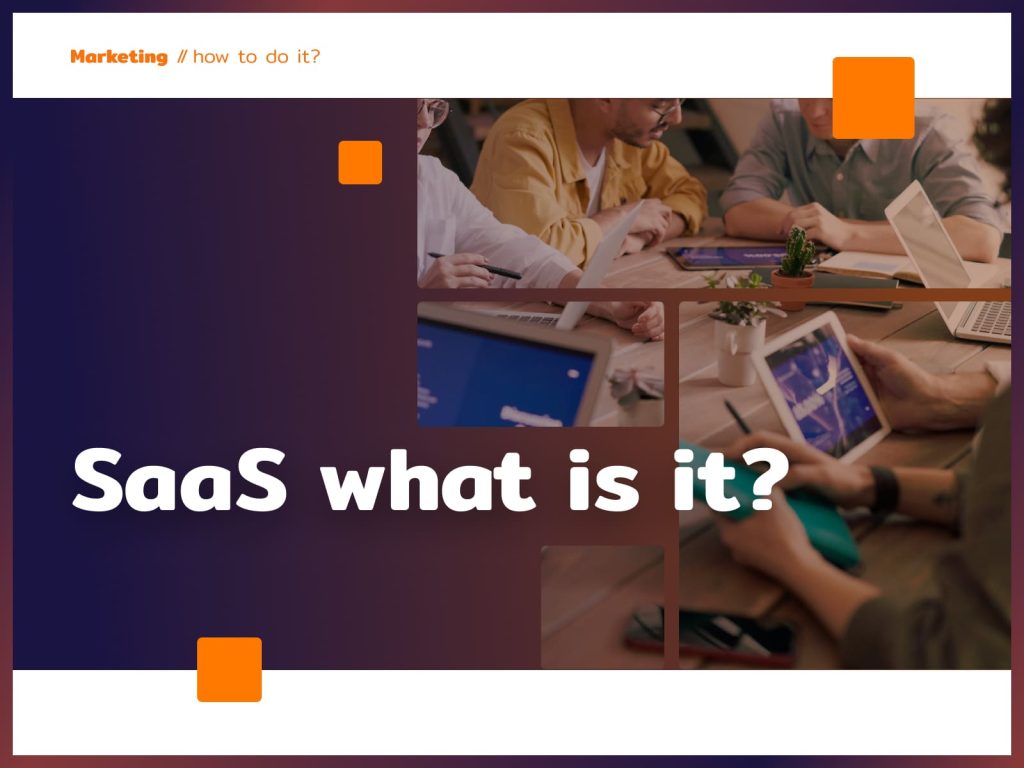One effective and accessible solution for those interested in starting their own online store is to use the SaaS model, or Software as a Service. This approach offers entrepreneurs many advantages, such as a quick start, low initial costs and flexibility to customize the store. In this article you will find information on why setting up online stores based on the SaaS model can be an excellent choice, and for both new and experienced entrepreneurs.
SaaS what is it?
SaaS stands for “Software as a Service.” This is a software delivery model in which a vendor provides computer applications as an online service. This means that users do not need to install or manage the software on their local computers or servers. Instead, they can use the software via a web browser or app client that connects to the online service.
The main features of SaaS are:
- Access via browser: Users can access the software via a web browser, eliminating the need for installation on their devices.
- Subscription fees: The SaaS model is usually based on subscription fees, meaning that users pay regularly to use the service, rather than incurring a one-time cost to purchase the software.
- Updates and support: the SaaS provider is responsible for maintaining and updating the software, allowing users to benefit from the latest versions and avoid the need for manual updates.
- Flexibility and scalability: SaaS often offers the flexibility to tailor the number of users and resources to a company’s current needs, making it easier to scale as the business grows.
- Accessibility from different devices: SaaS services are typically accessible from different types of devices, such as computers, cell phones and tablets.
- Cloud data management: Data is often stored and managed in the cloud, making it easy to access from anywhere.
Examples of SaaS services include project management tools, CRM (Customer Relationship Management) systems, data analysis tools, office applications and many others. The SaaS model is particularly popular in the field of business software and web services, as it allows companies to use advanced tools without significant investment in infrastructure and software management.
CMS SaaS
A SaaS (Software as a Service) content management system (CMS) is a solution that allows users to create, manage and publish content online without having to install and configure software on their server. With a SaaS CMS, the entire technical infrastructure, including hosting and updates, is managed by the service provider. Here are some key features and advantages of a SaaS CMS:
- Accessibility from a browser: Users can manage content using a web browser, making it convenient and accessible from anywhere.
- Ease of use: SaaS CMSs are often designed with ease of use in mind, allowing users without advanced technical knowledge to create and edit content.
- Security and updates: SaaS providers provide security and regular software updates, eliminating the need to manage security yourself.
- Scalability: SaaS CMSs allow for flexible customization of service levels to meet current needs, both in terms of functionality and resources.
- Technical support: SaaS providers often offer technical support, which can be valuable in case of software problems.
- Content management: Users can create, edit and publish various types of content, including articles, images, videos and more.
- Collaboration: SaaS CMSs allow multiple users to collaborate, which is useful for larger teams.
- Integrations: SaaS providers often offer integrations with other tools, such as e-commerce systems, marketing automation, and data analytics, allowing for extensive functionality.
- Costs: The SaaS model is often subscription-based, which means fixed monthly fees. This can be more predictable than traditional solutions that require investment in infrastructure.
It is worth noting that the choice of SaaS CMS depends on individual business needs and requirements. Before making a decision, it is advisable to thoroughly research the various options available and choose the solution that best suits your company’s specific goals and strategy.
Google SaaS
“Saas Google” refers to the various services and tools offered by Google under the SaaS (Software as a Service) model. Google offers many applications and tools available online that you can use without having to install software on your local computer.
Here are some examples of popular SaaS tools and services from Google:
Google Workspace (formerly G Suite)
It’s a cloud-based toolkit that includes Gmail, Google Drive, Google Docs, Google Sheets, Google Slides, Google Calendar and many other applications. Google Workspace is a popular solution for companies that want to use online office tools.
Google Ads
Google Ads is a platform for managing online advertising campaigns. Companies can use Google Ads to create and manage ads in Google search results and on other advertising platforms.
Google Analytics
It’s a web data analysis tool that helps companies track traffic to their websites, analyze user behavior and measure the effectiveness of online marketing efforts.
Google Cloud Platform (GCP)
GCP is a cloud platform offering various services such as cloud computing, data storage, data analytics, artificial intelligence and more. GCP is used to build and deploy applications in the cloud.
Google Drive
Google Drive is a cloud-based file storage service that allows users to store, share and synchronize files between different devices.
Google Meet
Google Meet is an online video conferencing tool that allows users to hold online meetings, share screens and collaborate remotely.
Google Photos
It’s an online photo storage and sharing service. Users can store their photos and videos in the Google Photos cloud.
Google Forms
Google Forms is a tool for creating online surveys, registration forms and other web forms.
Google Cloud Storage
It’s a cloud storage service that is part of Google Cloud Platform. It offers scalable data storage solutions for businesses.
Google Workspace for Education
This is an education-specific version of Google Workspace, which is used in schools and universities.
Google offers many other SaaS services and tools that are used in various fields and industries. These are solutions that enable companies and users to take advantage of advanced technologies without having to install and manage software on their own servers.
Setting up online stores: SaaS – is it a good solution?
Setting up online stores based on a SaaS model can be a great solution, but there are a few factors to consider before you make a decision.
Advantages of using the SaaS model when setting up an online store:
- Quick start: Getting started online is much faster with off-the-shelf SaaS platforms. You don’t have to waste time designing and developing complex software.
- Low upfront costs: the SaaS model is often subscription-based, eliminating the need to invest in expensive software and server infrastructure to begin with.
- Flexibility: You can customize your SaaS platform by adding or removing features as your business grows.
- Updates and support: SaaS providers regularly update software and provide technical support, which means you don’t have to worry about maintenance and updates.
- Security and reliability: many SaaS platforms offer advanced security solutions and guarantee high levels of availability.
- Scalability: You can easily scale your store as your sales grow by adding more products, categories or geographic areas.
- Accessibility from different devices: SaaS platforms are typically accessible from a variety of devices, allowing customers to shop on smartphones, tablets and computers.
However, there are also some limitations and potential drawbacks:
- Monthly fees: Subscription costs can accumulate over time, which may be less cost-effective in the long run.
- Less control: You don’t have full control over the infrastructure and source code, which can limit customization of the store to meet specific needs.
- Functional limitations: Some SaaS platforms may have limitations on available features, especially when compared to their own custom solutions.
- Provider dependency: You are dependent on the SaaS provider, which means you must trust them to deliver stable and reliable services.
Summary
Setting up online stores is a step toward growing an online business, and the SaaS model can greatly facilitate the process. Accessibility, flexibility and low upfront costs make SaaS an attractive choice for many entrepreneurs. Nevertheless, the choice of a SaaS platform requires careful consideration and customization to meet specific business needs.
Need advice on choosing the best solution for your e-commerce business? Take advantage of my help – welcome!











